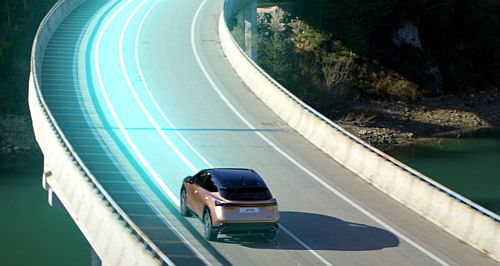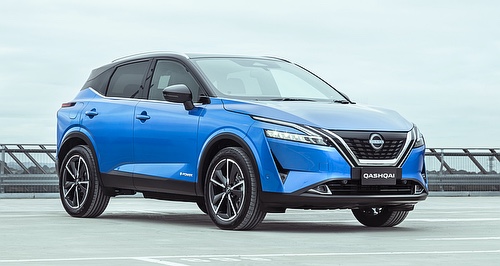Make / Model Search
News - NissanNissan says ADRs limit customer choiceNissan calls for reconsideration of stringent rules ahead of NVES implementation11 Mar 2024 NISSAN Australia hasn’t quite gone as far as to demand that ADRs be put in the bin – but the brand has called on the government to consider the sizable impacts that Australian Design Rules have on limiting what customers can buy, and what brands can sell them.
At the launch of the new Nissan Qashqai e-Power variant – an electrified model which won’t count towards the brand’s emissions calculations under the proposed New Vehicle Emissions Scheme – the head of the Japanese company’s local arm suggested that Australia’s outdated and interruptive Design Rules can, and will continue to, get in the way of progress.
Adam Paterson, Nissan Oceania managing director, didn’t outright call for a rethink on ADRs, but reading between the lines of his carefully worded statement, it is clear some of these strict requirements that are specific to this market – which, in the scheme of things, is tiny – come across as antiquated.
“We requested the government to amend Vehicle Type Approval requirements to allow direct acceptance of type-approved vehicles from global major markets in full volume supply, to speed up the introduction of new vehicles,” said Mr Paterson.
That model - which is the most popular electric car in its home market of Japan, and was on show at Everything Electric in Sydney last month, but not on the Nissan stand – it was on show by specialist EV import business, The Good Car Company.
Mr Paterson explained that while adding smaller, more affordable EVs that currently aren’t on the market here would be part of a possible way forward for Nissan, he said that it’s not just vehicles that aren’t sold here yet that are being held back by ADR requirements.
“I can't speak for every other brand. But what I can tell you is that it would allow ... There are specific development requirements for the market. And there are specific development requirements for many markets, but that adds time and cost,” he said.
“Essentially what that allows us to do is to access vehicles from other markets that still meet important regulatory requirements, and to bring them here faster. That's why that's requested.
“I'm certain that is a request of other manufacturers as well.”
Mr Paterson hinted that it is a problematic set of circumstances in its current state, with vehicles like the Qashqai e-Power having been delayed years since introduction, in part due to some specific ADR requirements. It is understood that part of the delay with the Ariya electric vehicle also comes down to ADRs.
“I guess our comment is more on the vehicles that we are marketing today, and the unique requirements of them that are different from European spec, or Japanese spec,” he said.
“And I mean, there are specific requirements for Qashqai for X-Trail, which are vehicles that are marketed in both Japan and Europe…. and those are just barriers to entry.
“Those are within the cars that are, let's say, legacy models within the market. And to me, that's ideally where we're focusing on removing those (penalising ADRs), so that bringing launch dates more aligned with global launch dates is something that's easier to be done.”
More broadly, Nissan Australia’s approach for its NVES submission largely aligned with Option B for the proposed legislation – a “fast but flexible” approach that “provides a strong, ambitious and achievable policy”.
Mr Paterson stated the company is calling for a reconsidered implementation period for manufacturers to react and sort out their business cases for modified model ranges, as well as reconsidered categorisation for larger, heavier vehicles to fall outside of the passenger-car tallies.
Furthermore, Nissan Australia has put forward in its proposal that customers should be incentivised to make more environmentally friendly vehicle choices, as has been the case in every other market that has implemented strict requirements around emissions.
Nissan Australia has only one EV on its books, the ageing Leaf hatchback, though the Ariya electric SUV was expected to be offered here sometime this year, but there’s no update from the brand on when the launch of that model is planned.
The Australian market hit a high note for EVs in February 2024, with the market having seen a record 15,004 EVs registered in the first two months of the year.
For February alone, a huge 9.6 per cent of registrations were for electric models, bolstered by a literal boatload of Tesla Model 3s hitting our shores (totalling 3593 units).  Read more |
Click to shareNissan articlesResearch Nissan Motor industry news |












Facebook Twitter Instagram